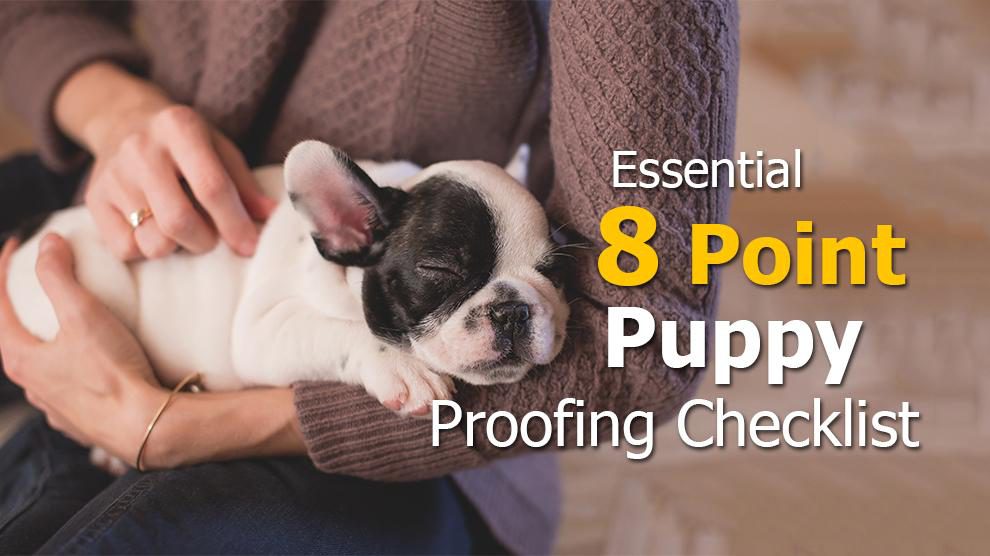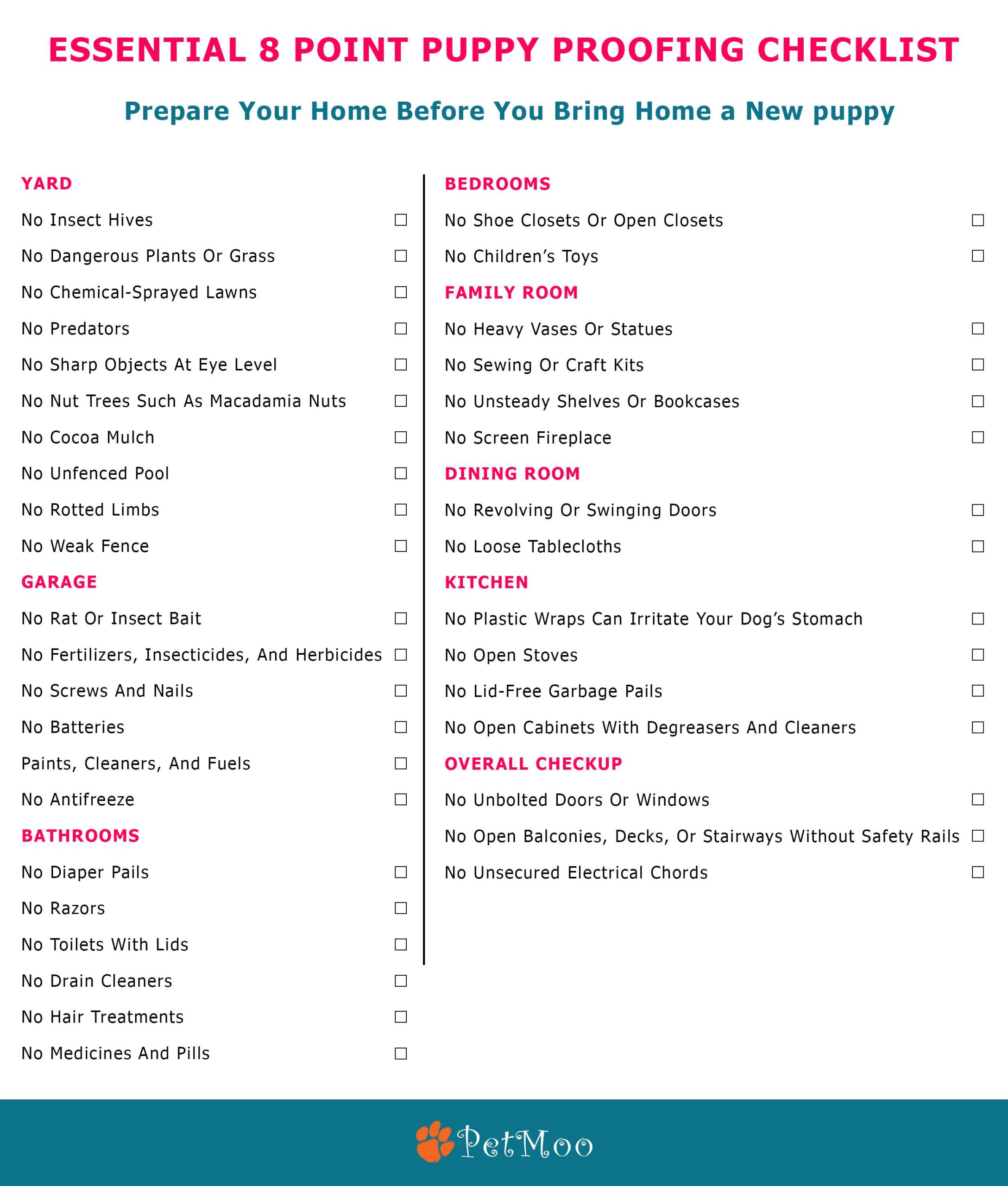Dog Pregnancy Calculator And Timeline
Puppy proofing is, unassumingly, quite similar and exhaustive to baby-proofing your home. Tedious but amazing! Well! Congrats! You have taken the lucky plunge and excitedly become one of the proud owners of canine beauty.
Your home is the most important place in the whole world for your puppy. Why? He is now your family member.
You better take enough precautions to ensure that it’s a secure environment for him.
Puppies are notoriously mischievous, curious, and energetic.
Handling Puppy Chaos
Getting prepared for a new baby is a lot easier than getting prepared to handle a new baby.
Unlike a new-born, your puppy will be running around as soon as she reaches home. These puppies will overtake any baby; her capacity to cause indoor confusion, dig, or gnaw is incomparable.
The best time to prepare is ideally before you bring home a puppy.
Bear in mind, most of us will find it hard to modify our homes to a new puppy-proof atmosphere.
Confining or containing your dog should be your top priority at first.
Are these places in your house safe for your puppy?
- Bathrooms
Bathrooms are not suggested because they can be claustrophobic and contain hazardous chemicals and poisons.
- Garages or Car Sheds
This area is highly dangerous to your puppy. We don’t wish to elaborate why because of obvious known reasons.
- Kitchens
The kitchen is not the right area. Your puppy will nip your leg while you cook. You better try to use baby gates and generally avoid the accordion type.
This type of baby gates can give some tough time to her.
Puppy-Proof Solutions
Playpens
The easiest solution is to invest a simple playpen for dogs. These dog playpens are called X-pen or exercise pen.
Crate
You can buy a crate and place the same in the X-pen. Most show dogs are trained to use an exercise pen with a raised platform.
This allows them to ease themselves without soiling or dirtying their feet.
The Importance of Crate Training
Every puppy should be given crate training. Crates make most training, including house-training uncomplicated and simpler.
An untrained puppy may scratch, rip the mat, bite or just scream, if you force her in.
The owner should never use the crate for punishment or as a storage place. Any dog will normally dislike it.
- How to make your puppy love crates?
Place your puppy in the crate when she is asleep. Never lock the door.
Initially, give your puppy treats to relish. The treats can be something unique or a smart interactive toy would do.
Build good positive associations and memories with the crate. Don’t overuse the crate.
Separation anxiety
Teach your puppy to stay alone. Puppies are social animals and being alone is difficult for them. Save a cool smart toy to keep her occupied when you’re leaving.
Despite all your sincere efforts, puppies are prone to separation anxiety.
Talk to your vet if your puppy damages furniture when left alone.
Puppy House Training
Pooping and peeing remain the top priority in any puppy’s life.
- The main problem is that keeping the bowel or bladder empty feels good, so she is handsomely rewarded.
- Puppies associate with the place and the more you find her doing in the wrong location, the more she creates a bad association.
- For this one important reason, it’s crucial to buy your puppy only from a reputed breeder who never allows them outside the cages.
- Your puppy’s own feces and urine will beckon her to use the same place again. This is the reason why breeders advice thorough proper cleaning with dog cleaners.
- Young puppies have very poor bowel and bladder control.
- That simply means a three-month-old puppy can hold for three hours, up to about 6 months old.
- All puppies have an inborn trait to keep their place unsoiled and that also includes the crate.
- Be patient. A few gifted puppies are house-trained even before four months of age.
Ideal Starts for Cute Puppies
According to experts, a puppy’s brain-wave activity and behavior work at nearly adult levels when they are 8-week-old.
A puppy’s capacity to learn or absorb commands decreases beyond the normal age of around 16 weeks.
The important things you teach your puppy will be second nature. Puppies begin life almost fearless but later turn cautious with age.
They become fearful of certain objects or situations.
Exposing your puppy to as much experience as possible will help her deal with the same experience in life without fearing anything.
That means exposing your puppy to alone time, crates, leash walking, grooming, noises, stairs, traffic, cats, dogs, children, women, and men.
Good experiences are stress busters and one bad experience is unbelievably worse or worse than no experience.
Wait until your puppy has got her two sets of vaccinations.
Meeting children and other pets
Puppies and children should always remain under adult supervision. Create a pandemonium over the dog so the dog connects the baby with happy times.
If you already own a dog, it is better to introduce her on neutral territory.
Always make sure your first dog gets petted and fed first. Feed your older dog some treats when he is around the new puppy so that he will associate the new puppy with good things.
How about cats?
Cats and dogs can become friends unless and otherwise, you own a rogue one. Let them meet indoors because cats are more likely to have their way.
If a cat decides to become a friend, kindly welcome it with an open heart.
Rules for Leash Walking
Your dog will also need a leash along with a harness or collar.
A harness can remain hard to pull. Try a martingale collar or a buckle. A collar, choke, or slip is ideal during walking your dog in the public.
Your leash should be leather or nylon because chains are difficult to handle.
The first time she may bite at it. Give her plenty of treats and make her wear the collar only for a brief period of time.
Repeat this process several times until she associates the collar with good times. Put the leash and lure her with more and more treats. Feed her treats when she walks alongside you.
With experience, your dog will realize that walking alongside will get her more treats.



















